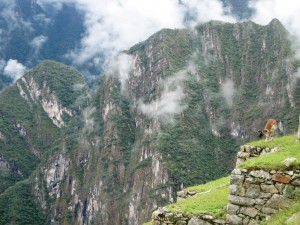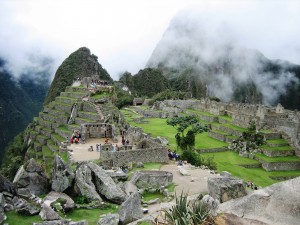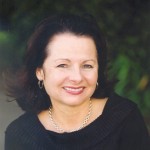Machu Picchu’s High Road Can Be The “Short Trail”
 Hidden from modern civilization until Yale archaeologist Hiram Bingham discovered Machu Picchu in 1911, the Peruvian site is a relative newcomer to the world’s stage of not-to-be-missed wonders. Named the “lost city” by Bingham, the historic ruin is the most prominent legacy of the Incans and has the distinction of being on both the World Cultural and Natural Heritage Lists by UNESCO.
Hidden from modern civilization until Yale archaeologist Hiram Bingham discovered Machu Picchu in 1911, the Peruvian site is a relative newcomer to the world’s stage of not-to-be-missed wonders. Named the “lost city” by Bingham, the historic ruin is the most prominent legacy of the Incans and has the distinction of being on both the World Cultural and Natural Heritage Lists by UNESCO.
Its location is mystical. Perched atop a peak that rises from a fertile Andean valley sitting on the fringe of the jungle, it is ringed by altitude-defying mountains. The surrounding terrain is steep, making accessibility to this part of the country limited to train or the Inca Trail.
The majority of Machu Picchu’s 2,500 daily visitors arrive by the traditional route – four-hour train ride from Cuzcoto the tracks’ end at the village of Aguas Calientes. From the non-descript town a 20-minute bus ride is the last leg of the quest, transporting passengers up the mountain of Machu Picchuto the famous ruins.
 By contrast, uber-adventurers opt to trek the Inca Trail from kilometer 88 (translation: 88 km by train from Cuzco) – camping three nights along the way and reaching altitudes of 14,000 ft. before arriving by foot at the 7,900-ft. mountaintop marvel. A lesser known alternative is the Short Inca Trail. The option is a compelling compromise if you have the ability for adventure but a proclivity for hotel lodging.
By contrast, uber-adventurers opt to trek the Inca Trail from kilometer 88 (translation: 88 km by train from Cuzco) – camping three nights along the way and reaching altitudes of 14,000 ft. before arriving by foot at the 7,900-ft. mountaintop marvel. A lesser known alternative is the Short Inca Trail. The option is a compelling compromise if you have the ability for adventure but a proclivity for hotel lodging.
Leaving from the Cuzco station at 6:15 a.m., the train passes the Wakay Wilka glacier, small farming communities and colorfully attired Peruvian women selling their wares alongside the tracks as it lumbers toward Machu Picchu. Rather than disembarking at kilometer 88, further down the tracks is the exit – kilometer 104. Standing in gravel by the train, there are no embellishments – no station, no platform. An arrow on a simple green and white sign indicates the direction to the trailhead across the Urubamba River.
You’ll need your passport – they are shown at the checkpoint, where entrepreneurial locals sell $3 walking sticks carved from tree branches, a deal if you neglected to pack the hiking poles. Chachabamba, an archeological complex discovered in 1940 appears immediately. From there the trail ascends steadily to an elevation where the train tracks become small silver slivers. Stone steps sized for diminutive Incan feet replace the dirt path, and the terrain transforms from a near-barren mountainside to a lush rainforest.
Four hours into the hike, Winay Wayna, a multi-terraced Incan temple, offers a modest peek of the real prize that awaits you. The last challenge is a near vertical flight of 50 stone steps leading to the final pass, Sun Gate. Though viewed from a distance, the reward is dramatic – the first glimpse of Machu Picchu and its labyrinth of temples, plazas and agricultural terraces.
From here, the descent into the ancient city begins. Because crowds at Machu Picchu typically dissipate after 3:30 p.m., an arrival close to the 5:30 p.m. bus (the day’s final departure) may mean having the spiritual haunt to yourself. And though the tour package includes a bus return the following day for a guided narrative visit, the memorable Machu Picchu is likely to be the first one that greeted you in magical silence.
Tempted to hit the trails? Just don’t forget that a guide is required. The number of hikers on the Inca Trail is strictly regulated making prior arrangements through a licensed operator necessary – possibly one year in advance during the June-August high season.
_____________________________________________________________
 As a freelance travel writer and photographer since 1988, Cynthia Dial has visited the world’s seven continents (most recently Antarctica) in quest of a good story . . . from getting her hair cut in Paris, horse whispering in Hawaii and touring Burma (Myanmar) only months after Aung San Suu Kyi’s release . . . to celebrating Summer Solstice within Finland’s Arctic Circle, hiking to Machu Picchu and visiting Molakai’s former leper colony atop a mule alongside a plunging cliff. In short, she experiences and writes about topics at the top of many readers’ bucket lists. Cynthia is author of the award-winning non-fiction book, Get Your Travel Writing Published. Now in its third printing, it was published in London, England, and sold worldwide (U.S. distributor is McGraw-Hill). Among her outlets are national and international newspapers and magazines including, Time magazine, Hemispheres, Destinations Weddings & Honeymoons, Shape, Dallas Morning News and the Toronto Star (which featured her around-the-world shopping column, Shopping Trips). She also contributes to TraveLife Magazine (distributed throughout Canada) and JustLuxe.com (a luxury portal receiving 2.1 million monthly hits). Cynthia’s radio experience includes World Footprints Radio (formerly Travel’n On) and the Travel Hub show on WorldTalk Radio, on which her No Passport Required segment was a regular feature. She additionally appears as a travel specialist on LiveFitMagazine.com. The travel-addicted writer admits that each time she steps onto an international flight, boards a train or steps onto a ship’s promenade deck to go to work, she congratulates herself on her career choice.
As a freelance travel writer and photographer since 1988, Cynthia Dial has visited the world’s seven continents (most recently Antarctica) in quest of a good story . . . from getting her hair cut in Paris, horse whispering in Hawaii and touring Burma (Myanmar) only months after Aung San Suu Kyi’s release . . . to celebrating Summer Solstice within Finland’s Arctic Circle, hiking to Machu Picchu and visiting Molakai’s former leper colony atop a mule alongside a plunging cliff. In short, she experiences and writes about topics at the top of many readers’ bucket lists. Cynthia is author of the award-winning non-fiction book, Get Your Travel Writing Published. Now in its third printing, it was published in London, England, and sold worldwide (U.S. distributor is McGraw-Hill). Among her outlets are national and international newspapers and magazines including, Time magazine, Hemispheres, Destinations Weddings & Honeymoons, Shape, Dallas Morning News and the Toronto Star (which featured her around-the-world shopping column, Shopping Trips). She also contributes to TraveLife Magazine (distributed throughout Canada) and JustLuxe.com (a luxury portal receiving 2.1 million monthly hits). Cynthia’s radio experience includes World Footprints Radio (formerly Travel’n On) and the Travel Hub show on WorldTalk Radio, on which her No Passport Required segment was a regular feature. She additionally appears as a travel specialist on LiveFitMagazine.com. The travel-addicted writer admits that each time she steps onto an international flight, boards a train or steps onto a ship’s promenade deck to go to work, she congratulates herself on her career choice.
“Follow me around the corner and around the world as I share the ins, the outs, the good, the bad, the funny, the sad – all pieces of the traveling puzzle.” – Cynthia Dial










You must be logged in to post a comment Login